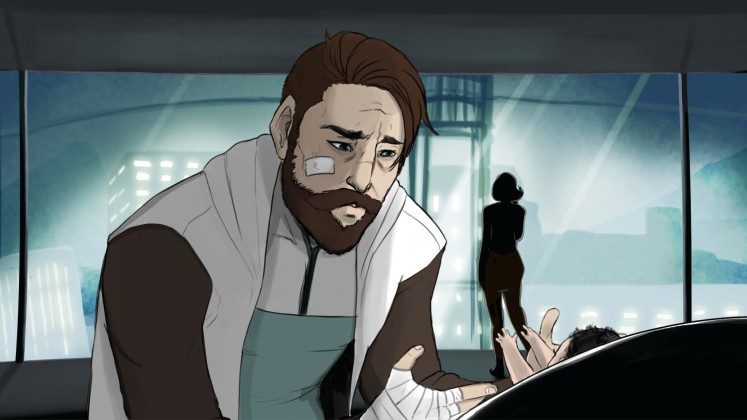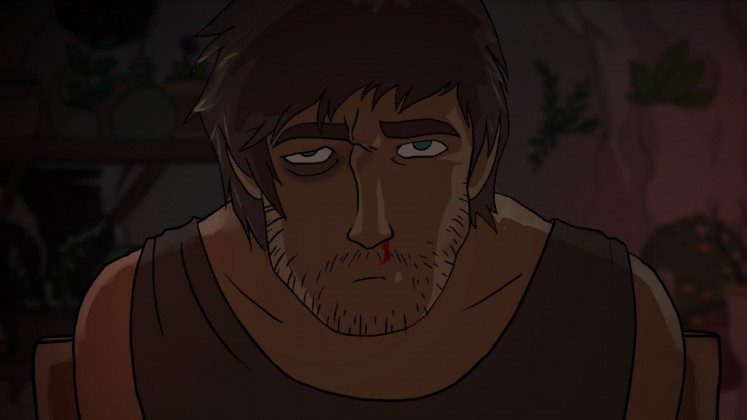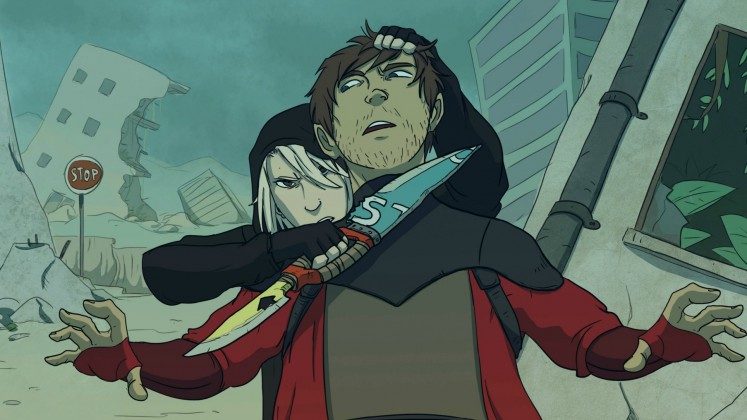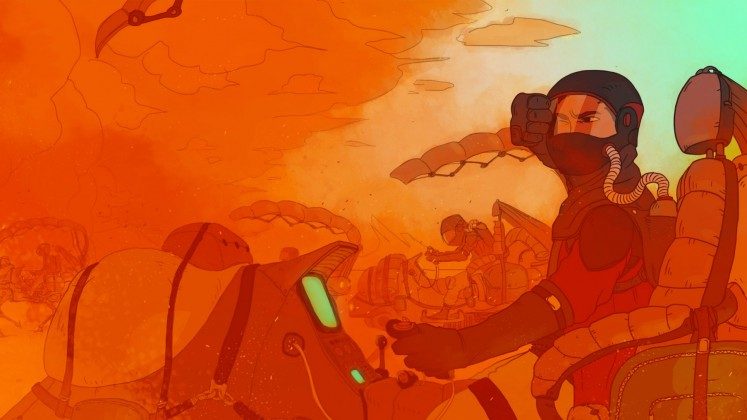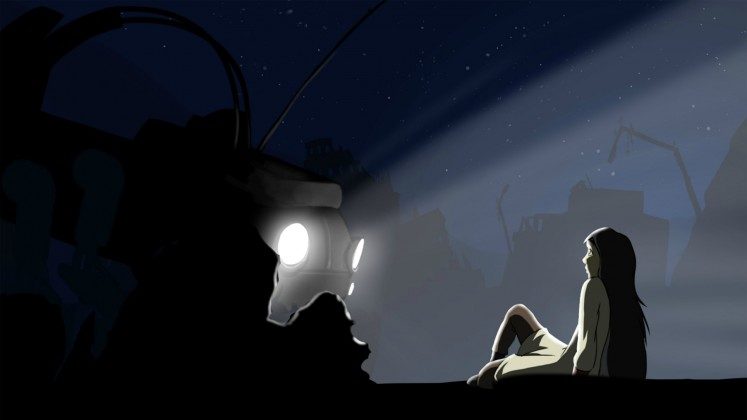Sequenced is an upcoming animated series by Apelab for VR headsets that’s pioneering a new method of delivering episodic content, one that tailors itself to the individual viewer in the slightest way imaginable. And all that Sequenced wants from you, the passive observer, is your attention.
Enter Raven, a thirteen year old girl soon to become the ‘chosen one’ of a post apocalyptic society. The world, a bleak but hauntingly beautiful landscape, only has a single city left in existence, and it’s the last remaining seat of high technology.
The project features a stylized mix of 2D and 3D animation, taking inspiration from Hayao Miyazaki’s Nausicaä of the Valley of the Wind (1984), and in large part from Apelab CEO Emilie Joly’s own grandfather who lived for many years secluded in the New Mexico desert. But the difference between Sequenced and more linear stories lies in how you experience it—or rather how it reacts to you as an individual.
While you’re clearly an observer of the story, your gaze actually triggers a number of elements that can change character dialogue and other important events. Because it’s based on how you react personally, it lets you experience the story in Sequenced like a toned down version of ‘choose your own adventure’ books. Instead of directly choosing though, your job is to sit back and watch, almost to the point where you forget that the narrative is subtly molding around you. Watching the prototype on my Oculus Rift DK2, I was offered quick reactive choices of whether to pay attention to certain characters or objects, a flying drone or a muffled voice from behind me.
See Also: Preview: ‘Fated: The Silent Oath’ is a Beautiful Mix of High Action and Real Emotion
One of the later scenes which features a confrontation between a tribal leader and a member of a recon team from the last city, contains over thirty triggers and five different story branches inside the scene itself—and while that means an intense amount of alternate footage, it also lends itself to massive replay value.
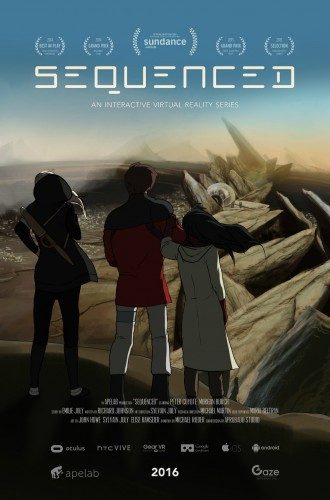 The developers at the Geneva/Los Angeles based Apelab are couching Sequenced in the term ‘interactive series’, and while this is true on some level, the word ‘reactive’ does it so much better justice. Since you’re not directly responsible for how the story unfolds, which has to follow some semblance of defined story arc from episode to episode, Apelab will have their work cut out for them as they tighten down on mechanics—like how they directly appeal to different styles of viewers. And if they can get that right, they’ll be blazing a trail into an entirely new medium that not only is designed to hook into how your brain processes the world, but addressing some of the biggest problems in static 360 storytelling.
The developers at the Geneva/Los Angeles based Apelab are couching Sequenced in the term ‘interactive series’, and while this is true on some level, the word ‘reactive’ does it so much better justice. Since you’re not directly responsible for how the story unfolds, which has to follow some semblance of defined story arc from episode to episode, Apelab will have their work cut out for them as they tighten down on mechanics—like how they directly appeal to different styles of viewers. And if they can get that right, they’ll be blazing a trail into an entirely new medium that not only is designed to hook into how your brain processes the world, but addressing some of the biggest problems in static 360 storytelling.
See Also: We Badly Need Episodic Narratives in VR
“In the final product there will be many additional triggers, which are not necessarily linked to the main arc but that add interactivity, feedback and a sense of magic that you are around here even if you aren’t really,” Joly tells us. “[it] could be as simple as an animal reacting to your presence thus affecting the two main characters, or a simple burst of wind and leaves passing by you as you watch the sky, a character suddenly reacting when you look. All those little important things are in the works but I think the core challenge here is to first be able to tell a good story, with an arc that has a beginning and an end while making it reactive to your presence. We really believe that interactive storytelling in VR needs to be organic, and reactive to the user.”
Sequenced’s story arch conceptually spans three 10-episode seasons and is slated to arrive on HTC Vive, Oculus Rift, Samsung Gear VR and Google Cardboard starting in early Q4 2016. The team plans on rolling out a new episode every three weeks from the release of the first episode.

